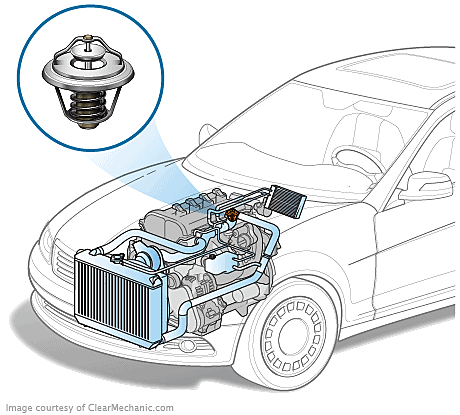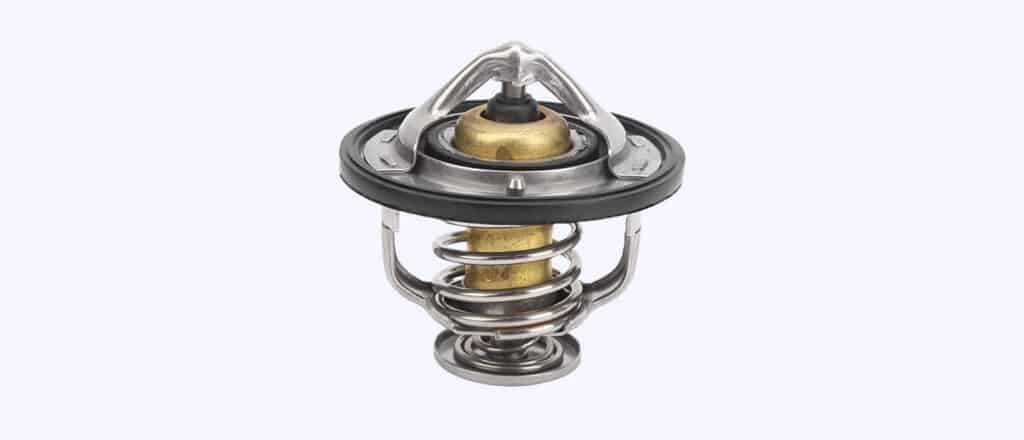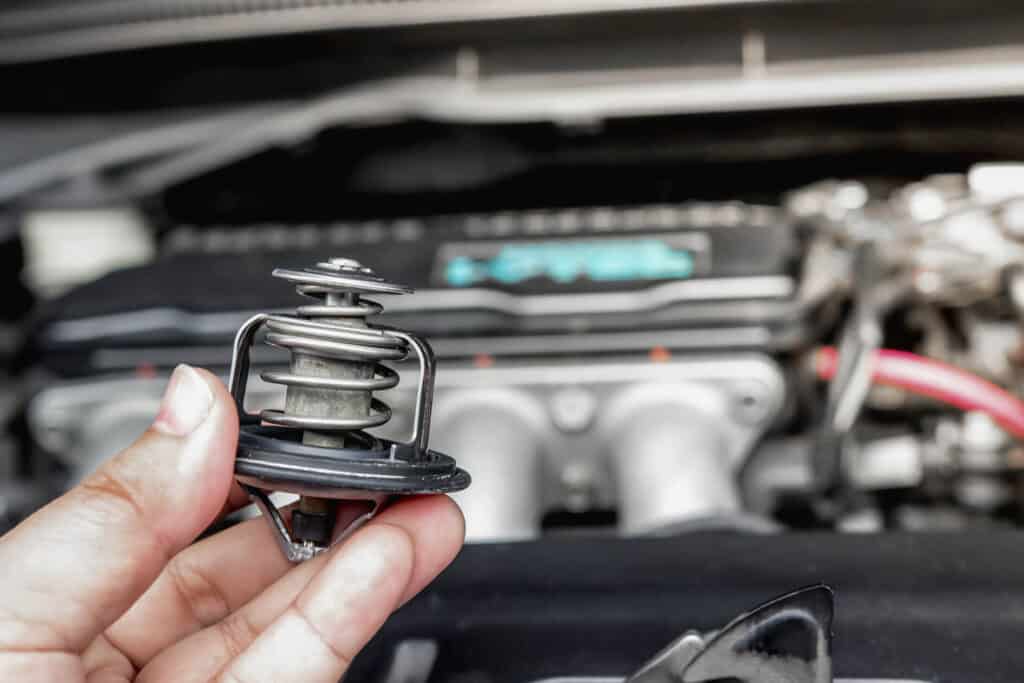Introduction: Keep Your Engine Running Smoothly with a Properly Functioning Thermostat
A thermostat plays a crucial role in maintaining your engine’s temperature. In this guide, we’ll discuss the importance of a thermostat, the cost of replacing one in Canada, and tips for prolonging its lifespan. Let’s dive in!
What is a Thermostat?
A thermostat is a temperature-sensitive valve that regulates the flow of coolant between the engine and the radiator. It helps maintain the engine at its optimal operating temperature, ensuring efficient performance and preventing overheating.
How Much Will it Cost to Replace a Thermostat in Canada?
• Parts: $20 – $80
• Labor: $100 – $200 (1 to 2 hours)
• Total: $120 – $280
The cost of replacing a thermostat in Canada varies depending on the make and model of your vehicle. On average, you can expect to pay between $120 and $280 for parts and labor.

What are the Symptoms of a Faulty Thermostat?
Symptoms of a faulty thermostat can include:
• Overheating: If the thermostat is stuck closed, it will prevent coolant from circulating through the engine, causing the engine to overheat. This can result in steam coming from under the hood, a rising temperature gauge, and potential damage to the engine.
• Poor cabin heating: If the thermostat is stuck open, the coolant will continuously circulate through the engine and radiator, preventing the engine from reaching its optimal operating temperature. This can result in poor cabin heating during cold weather.
• Fluctuating temperature gauge: If the thermostat is malfunctioning, the temperature gauge on your dashboard may fluctuate erratically, indicating that the coolant is not being regulated correctly.
• Decreased fuel efficiency: A thermostat stuck in the open position may cause the engine to run at a lower temperature than intended, which can lead to decreased fuel efficiency.
• Engine running too cool: If the thermostat is stuck open, the engine may struggle to reach its optimal operating temperature, resulting in suboptimal performance and increased emissions.
• Coolant leaks: A damaged or worn thermostat housing may cause coolant leaks, which can be identified by puddles of coolant under the vehicle or a low coolant level.
How Long Does a Thermostat Last?
A thermostat typically lasts between 160,000 and 240,000 kilometers. However, its lifespan can be affected by factors such as engine operating conditions and overall maintenance of the cooling system.
How Does a Thermostat Become Defective?
A thermostat can become defective for several reasons:
• Age and wear: Over time, the thermostat’s internal components can wear out, causing it to become less responsive to changes in coolant temperature or to stick in an open or closed position.
• Corrosion: Exposure to coolant and engine heat can cause the metal parts of the thermostat to corrode, which can lead to the thermostat becoming stuck or unable to function properly.
• Debris and contaminants: Dirt, rust, or other debris in the cooling system can clog the thermostat or prevent it from opening and closing properly.
• Manufacturing defects: In some cases, the thermostat may have been manufactured with flaws or defects that cause it to malfunction or fail prematurely.
• Improper installation: If a thermostat is installed incorrectly, it may not function properly or could become damaged.
• Incompatible coolant: Using the wrong type of coolant or mixing different coolants can cause deposits to form, which can lead to the thermostat becoming stuck or malfunctioning.

How Can a Faulty Thermostat Affect Other Systems in the Car?
A faulty thermostat can cause:
• Overheating: A stuck-closed thermostat can cause the engine to overheat, leading to potential damage to the engine, radiator, and cooling system components.
• Poor fuel efficiency: A stuck-open thermostat prevents the engine from reaching optimal operating temperature, resulting in increased fuel consumption and decreased fuel efficiency.
• Increased emissions: An engine running at suboptimal temperatures due to a faulty thermostat may produce higher emissions and potentially fail emissions tests.
• Accelerated engine wear: An improperly functioning thermostat can cause the engine to run too hot or too cold, contributing to premature wear on engine components.
• Ineffective cabin heating: A stuck-open thermostat can prevent the engine from reaching proper temperature, which may result in insufficient heat being generated for the cabin heating system.
• Strain on the cooling system: A faulty thermostat can put additional strain on other cooling system components, such as the water pump, radiator, and cooling fans, leading to potential failures in these parts.
Is it Safe to Drive with a Faulty Thermostat?
Driving with a faulty thermostat can be risky, as the thermostat plays a crucial role in regulating the engine’s temperature. A malfunctioning thermostat may prevent the engine from reaching its optimal operating temperature or cause it to overheat. Both scenarios can lead to poor engine performance, increased wear and tear, and potential engine damage.
In cases where the thermostat is stuck open, the engine will take longer to warm up and may never reach its proper operating temperature. While this may not pose an immediate danger, it can reduce fuel efficiency, increase emissions, and cause premature wear on the engine. On the other hand, if the thermostat is stuck closed, the engine can overheat rapidly, leading to more severe consequences such as warped cylinder heads, damaged head gaskets, or even complete engine failure. In this situation, it is not safe to continue driving and the issue should be addressed immediately. Regardless of the specific problem with the thermostat, it is best to have your vehicle inspected by a professional mechanic as soon as possible to diagnose and repair the issue.
How Can I Make My Thermostat Last Longer?
• Regularly check and maintain your vehicle’s cooling system
• Inspect the thermostat for signs of wear or damage
• Replace coolant according to your vehicle manufacturer’s recommendations
Can a Mobile Mechanic Replace a Thermostat?
Yes, a mobile mechanic can replace a thermostat, provided they have the necessary tools and expertise. This convenient service allows you to have your thermostat replaced without having to visit a repair shop.

Conclusion: Thermostat Replacement
A properly functioning thermostat is essential for maintaining optimal engine performance and preventing overheating. By following the tips provided in this guide, you can prolong the life of your thermostat and keep your engine running smoothly.
Next Steps
Book Your Thermostat Replacement Service
The service most frequently booked by those who read this article is Thermostat Replacement. Uchanics’ expert technicians make the process even more convenient by bringing the service right to your doorstep. We perform this job at your home or office, covering over 40 cities in Ontario, including Toronto, Mississauga, Brampton, Oshawa, Ajax, Scarborough and more. Our commitment to excellence has earned us more than 700 glowing 5-star reviews. Choose Uchanics for your Thermostat Replacement and experience unparalleled convenience and top-quality service.
